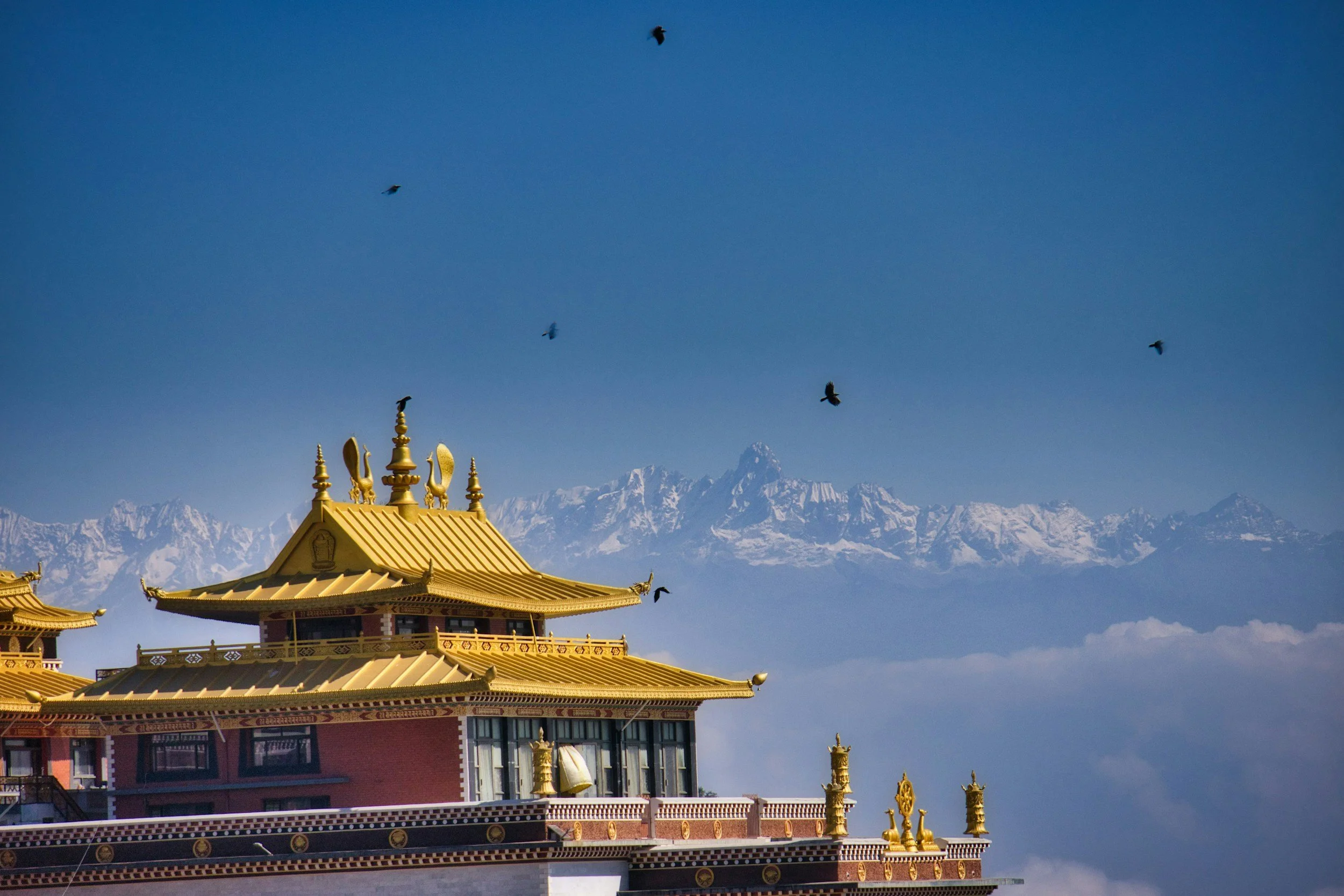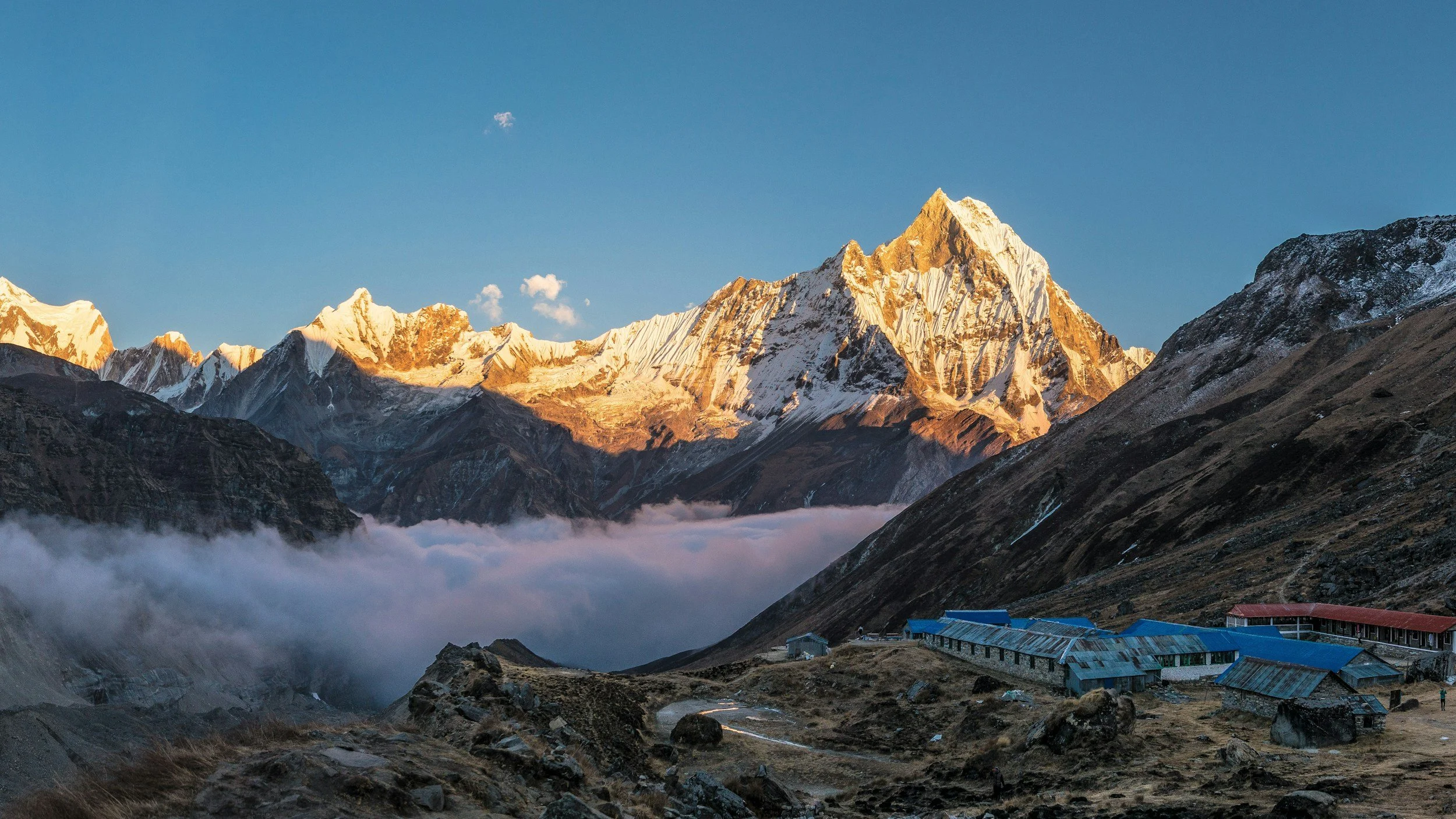Is the Annapurna Base Camp Trek worth it?
Overview
The Annapurna Base Camp (ABC) Trek is one of Nepal's most popular trekking routes, attracting thousands of trekkers from around the world every year. Imagine soaking up the breathtaking views, immersing yourself in vibrant cultures, and tackling terrain that's just challenging enough to feel accomplished - that's what the ABC Trek is all about. Is the reward worth the risky business? Buckle up because this trek is a journey of discovery – not just of the trails and vistas, but of yourself. From the natural beauty that'll leave you amazed to the transformative experiences that'll stay with you long after you return, we'll explore it all to help you make an informed decision.
The Majestic Landscape of Annapurna
The Annapurna Base Camp Trek is renowned for its breathtaking landscapes. Imagine making your way through a nature lover's playground with subtropical forests so lush they seem to swallow you whole, manicured fields crafted by patient farmers, rivers that twist and turn, and elevations so high the air grows thin. Climbing higher, the scenery shifts - flowers give way to craggy rock formations, and the view becomes breathtaking.
The Annapurna Massif
One of the key highlights of the trek is the close-up view of the Annapurna massif. The Annapurna range above the landscape boasts an astonishing collection of giants, each peak exceeding 7,000 meters in height. But one, in particular, stands out: Annapurna I, its 8,091-meter pinnacle leaving climbers awestruck and mere mortals pale. As you approach the base camp, the sense of scale and grandeur is overwhelming, with towering snow-capped peaks surrounding you on all sides.
Sunrise at Poon Hill
While the primary goal is reaching Annapurna Base Camp, many trekkers include a visit to Poon Hill in their itinerary. Located at an altitude of 3,210 meters, Poon Hill offers a panoramic view of the Annapurna and Dhaulagiri ranges, and the sunrise here is truly spectacular. Morning breaks over the peaks, casting a warm, golden glow that makes the trek's biggest payoff feel truly within reach.
Annapurna Sanctuary
The Annapurna Base Camp is located within the Annapurna Sanctuary, a high glacial basin surrounded by a ring of mountains. Imagine being enveloped by the Himalayas' rugged beauty, and you'll find yourself in this natural arena, surrounded by scenery so arresting it'll stop you in your tracks. Locals hold this picturesque sanctuary in high esteem, and for good reason - its tranquil atmosphere belies a profound significance that comes alive when you experience it alongside the people who call it home.
Cultural Immersion
Trekking in Nepal is not just about the mountains; it’s also about the people and their rich cultural heritage. Gurung, Magar, and Thakali villagers pepper the Annapurna region, each community rich in heritage and Warm hospitality against the breathtaking backdrop of the Himalayas.
Gurung and Magar Villages
As you trek through the Annapurna region, you'll pass through several traditional villages where you can experience the local way of life. Teahouses run by the Gurung and Magar communities are renowned for their warm welcomes. Over a steaming cup of Nepali chiya, you'll have the chance to connect with the locals, discover their rich cultural heritage, and savor mouthwatering regional dishes.
Local Festivals
If you're lucky enough to trek during a local festival, you'll get to witness traditional celebrations that include music, dance, and rituals. When hiking through the region, festivals like Dashain and Tihar are a bonus - and an unforgettable cultural experience awaits if you participate in these vibrant events.
Teahouse Culture
One of the distinctive features of trekking in Nepal is the teahouse culture. Along the Annapurna Base Camp Trek, you'll find numerous teahouses where you can rest, eat, and socialize with fellow trekkers. As trekkers pull into these snug retreats, weary muscles and minds suddenly uncoil. Amidst steaming cups and shared enthusiasm, they weave moments that linger as vividly as the treacherous trails and towering peaks.
Challenges of the Annapurna Base Camp Trek
While the Annapurna Base Camp Trek is considered a moderate trek, it comes with challenges. The secret to a successful hike lies in anticipation—knowing what to expect and being ready for it can turn an ordeal into an exciting journey.
Altitude and Acclimatization
One of the main challenges of the trek is the altitude. At an impressive 4,130 meters, Annapurna Base Camp marks the trek's highest elevation. Although altitude sickness is less common on this trek than on higher-altitude treks like Everest Base Camp, it can still affect some trekkers. Be kind to yourself at high elevations -take your sweet time, settle in gradually, and stay attuned to your body's subtle cues to avoid trouble.
Physical Fitness
The Annapurna Base Camp Trek is relatively easy, but it does require a good level of physical fitness. The terrain is unforgiving – imagine days of hiking up steep slopes and bouncing along rough trails. Remember, this trek is no cakewalk – inadequate preparation can leave you gasping for air. Get fit, get focused. Build up those leg muscles, get your heart pumping regularly, and haul a loaded backpack on some trial runs – it's the perfect recipe for a more enjoyable trek.
Weather Conditions
The weather in the Annapurna region can be unpredictable. The best time to trek is during the pre-monsoon (March to May) and post-monsoon (September to November) seasons when the weather is generally clear and stable. However, even during these times, you should be prepared for sudden changes in weather, including rain, snow, and cold temperatures, especially at higher altitudes.
Trail Conditions
The trail to Annapurna Base Camp varies in condition. In some parts, the path is well-maintained and easy to follow, while in others, it can be rocky, slippery, or even snow-covered. Trekking poles can be very helpful for maintaining balance and reducing strain on your knees, especially during descents.
The Rewards of the Trek
Despite the challenges, the Annapurna Base Camp Trek offers numerous rewards that make the journey worthwhile.
Reaching Annapurna Base Camp
The sense of accomplishment you feel when you finally reach Annapurna Base Camp is indescribable. At the Himalayas' majestic base, the sheer force of nature surrounds you, eliciting a primal response that resonates deep within, as if the land itself is calling out to you. The panoramic views from the base camp are among the best in the world, and the serenity of the place is something that will stay with you long after the trek is over.
Personal Growth and Reflection
Trekking in the Himalayas is not just a physical journey; it’s also a mental and emotional one. Wholly immersed in the rugged beauty of the mountains, you'll find an opportunity to quiet the external noise and tune into your inner voice, unearthing invaluable lessons about resilience and grit. Something shifts inside when you're trekking through rugged landscapes, and suddenly, life's bigger picture comes into focus—you start valuing everyday joys and cultivating a thankful heart.
Connecting with Fellow Trekkers
The Annapurna Base Camp Trek attracts people from all walks of life, and the shared experience of trekking in the Himalayas often leads to lasting friendships. Whether hiking with a group or solo, you’ll find that the bonds you form with fellow trekkers are one of the most rewarding aspects of the journey.
Practical Information
Trekking Permits
To trek to Annapurna Base Camp, you'll need two permits: the Annapurna Conservation Area Permit (ACAP) and the Trekkers' Information Management System (TIMS) card. These can be obtained in Kathmandu or Pokhara. The Annapurna region's incredible landscapes come with a responsibility—getting permits that directly benefit conservation efforts in the area.
Trekking Routes and Itineraries
The standard Annapurna Base Camp Trek typically takes 7-12 days, depending on your chosen itinerary. Most trekkers start and end the trek in Nayapul, with popular stops including Tikhedhunga, Ghorepani, Chomrong, and Deurali. Some itineraries also include visiting the hot springs at Jhinu Danda, where you can relax and rejuvenate after trekking.
Packing Essentials
Packing wisely is crucial for a successful trek. Prioritize these must-pack items: a dependable backpack, durable trekking boots, warm clothing that'll keep you cozy, a comfortable sleeping bag, and a first-aid kit that'll help you tackle minor setbacks. Don't let dehydration hold you back from conquering new heights – be prepared with water purification tablets or a filter to keep your body fueled and your mind sharp. Lightweight, moisture-wicking clothing and layers are recommended for dealing with varying temperatures.
Hiring a Guide or Porter
While the Annapurna Base Camp Trek can be done independently, many trekkers hire a guide or porter. By traveling with a guide, you'll absorb the local vibe, sidestep potential missteps, and get personalized support whenever you're faced with a hurdle or tough decision. Load up on luxury and let someone else lug your gear – you're on vacation, after all!
Is the Annapurna Base Camp Trek Worth It?
After considering all aspects of the trek, the question remains: Is the Annapurna Base Camp Trek worth it? The answer is a resounding yes for most trekkers. What makes this journey truly unforgettable is the heady blend of sensory indulgences, enrichment through cultural immersion, and moments of grit that prove your own resilience—you'll walk away reborn.
Active adventurers seeking a deeper connection with the natural world will find their sweet spot on the Annapurna Base Camp Trek, where every step reveals breathtaking vistas, rare glimpses into high-altitude life, and unforgettable memories. With each hurdle conquered, victory in hand, memories deepen, and details resurface to stir that unmatched glow of doing something worthwhile together.
Temper your hopes with a dose of reality before lacing up your boots. From fatigue to frostbite, high altitude to hailstorms, you'll want to get a handle on the physical and environmental challenges that can either facilitate or spoil your fun. Embracing the hardships of the Annapurna Base Camp Trek will lead you to a sense of accomplishment that few other adventures can match.
Conclusion
Beyond a trek, Annapurna Base Camp trek, you can travel to Mardi Himal Trek which is also beginner friendly. Imagine being surrounded by stunning vistas and endless scenery - that's what the ABC Trek has in store for you, an equally exhausting and exhilarating experience. There's a tangible buzz that comes with conquering this trail - it's the unbridled joy of reaching the top, the scenery that defies description, and the human connections that mold this trek into an intimate, shared experience.










